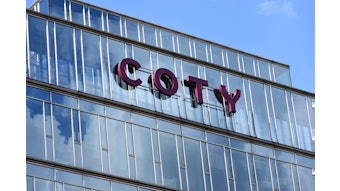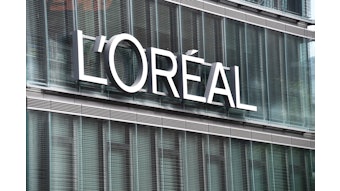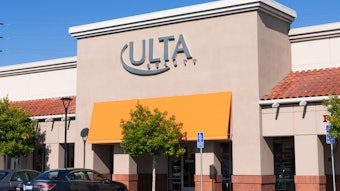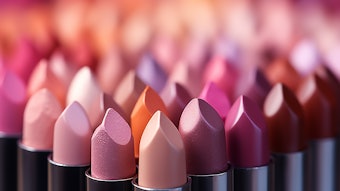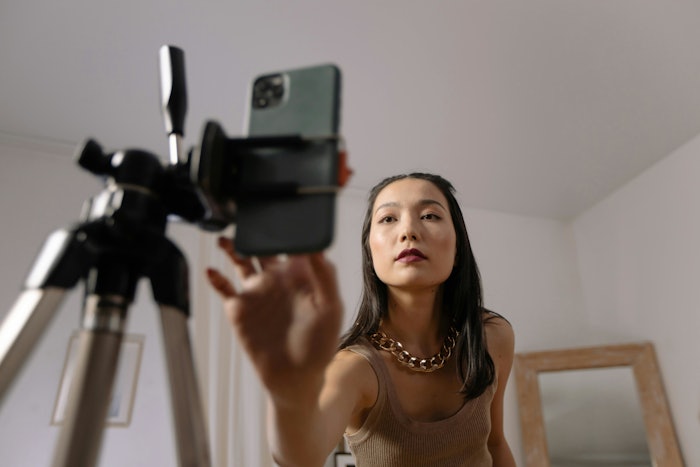
A new NIQ analysis reports that the global beauty sector charted 7.3% year-over-year value growth in 2024, led by a boom in Latin America ( up 19.1%) and the Africa-Middle East region (up 27.1%). North America and Western Europe also grew quickly, at 7.8% and 7.7%, respectively. To compare, Circana recently reported that 2024 U.S. beauty sales grew 3% in 2024, totaling $119 billion. Below, we've rounded up highlights of the shifting marketplace.
Digital commerce is booming
According to the NIQ report:
- 41% of beauty and personal care sales in the U.S. market is driven by e-commerce, having grown over the last 5 years, compared to relative stagnation in the brick-and-mortar channel
- 7.3: share points gained by Amazon in the in the U.S. market
- 87% of total hair and skin care sales are made online in China
- 17% of beauty products are purchased online in India
- < 10% of purchases in Brazil are conducted online
- 68% of global beauty purchases are driven by social commerce
- 8: TikTok Shop's ranking among all U.S. beauty and health ecommerce platforms
- 12.5%: portion of U.S. ecommerce shoppers that have made a health and beauty purchase through the app
- 31%: portion of skin care purchases in China conducted via Douyin/TikTok Shop
- $1 billion: TikTokShop's annual U.S. beauty sales
Beauty's new growth markets
- Top APAC regional growth markets include South Korea, India, Thailand, Singapore and New Zealand
- While these APAC markets are driving value growth, they also contribute new consumers fueled by rising incomes
Balancing Innovation, Tradition, and Sustainability: Keys to Thriving in the $1 Trillion Beauty Market
“In the rapidly changing beauty industry, success in 2025 is a delicate balance," said Tara James Taylor, senior VP beauty and personal care at NIQ. "The dynamics between innovation and tradition, affordability and luxury, sustainability and scalability, and personalization and inclusivity are reshaping the market for beauty manufacturers and retailers. Finding the right balance will be crucial for those aiming to thrive in the $1 trillion global beauty market.”
10 Action Items for Brand, Innovation & Marketing Strategies
- Embrace E-commerce Dominance: With 41% of U.S. beauty and personal care sales driven by e-commerce and significant growth in global markets like China (87%), brands must prioritize online platforms to stay competitive.
- Leverage Social Commerce: Social platforms like TikTok Shop are transforming beauty sales, driving 68% of global beauty purchases. Marketers should invest in social commerce strategies to connect with consumers where they shop.
- Focus on Regional Trends: Latin America (+19.1%) and the Africa-Middle East region (+27.1%) are leading growth in the global beauty market. Tailoring strategies for these booming regions can unlock new opportunities.
- Prioritize APAC Markets: High-growth markets such as South Korea, India, Thailand, and Singapore are not just boosting value but also introducing new consumers with rising incomes. Localized approaches are essential.
- Expand on Amazon: Amazon gained 7.3 share points in the U.S. beauty market, making it a key platform for reaching consumers. Optimize presence and listings on Amazon for increased visibility.
- Offer Affordable Luxury: The balancing act between affordability and luxury is reshaping consumer preferences. Brands that can cater to both ends of the spectrum will thrive.
- Capitalize on Personalization: With consumers seeking personalized products and services, brands should leverage data and AI to create tailored experiences that meet specific needs.
- Sustainability as a Differentiator: Consumers are increasingly drawn to sustainable beauty products. Highlight eco-friendly practices to appeal to environmentally conscious buyers.
- Adapt to Mobile-First Markets: In China, 31% of skincare purchases occur via Douyin/TikTok Shop. Brands in mobile-first regions should optimize for app-based sales and engagement.
- Innovate for Scalability: The $1 trillion beauty market is evolving quickly. Staying ahead will require balancing innovation with scalability to meet growing global demand effectively.




